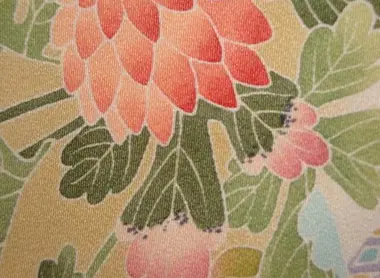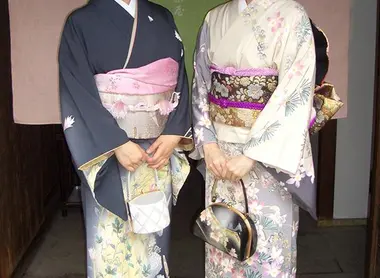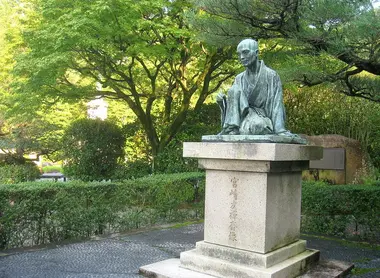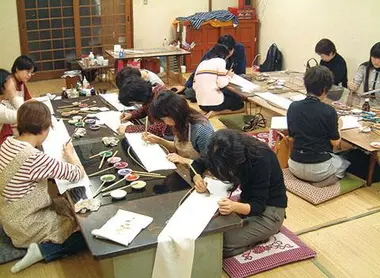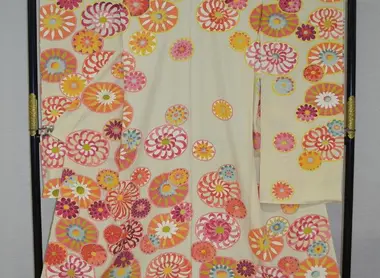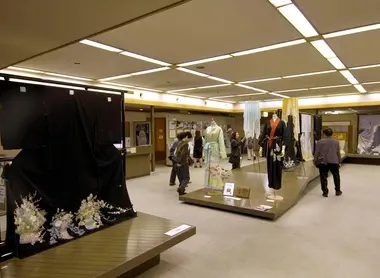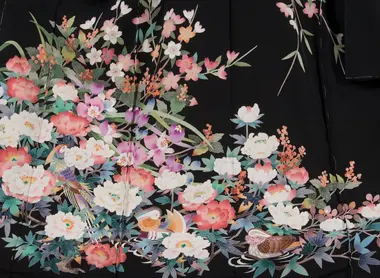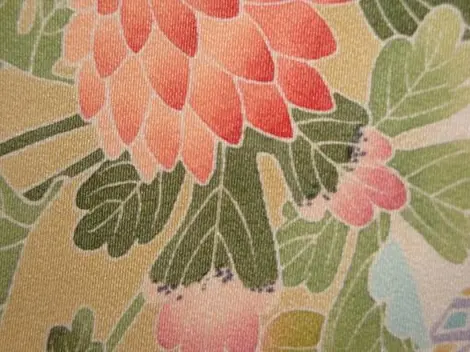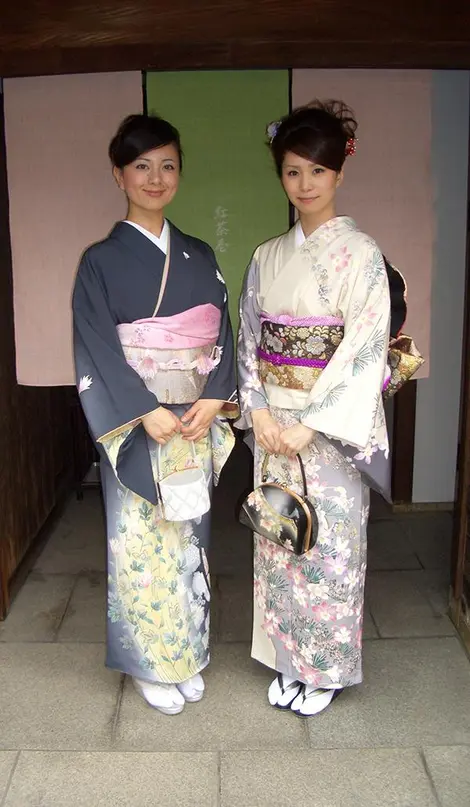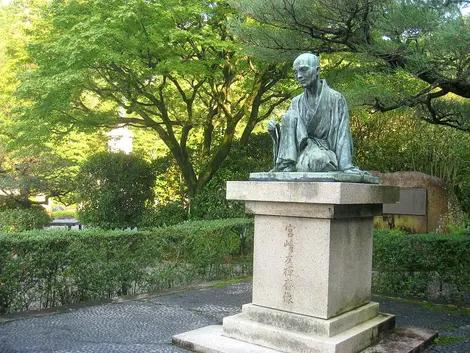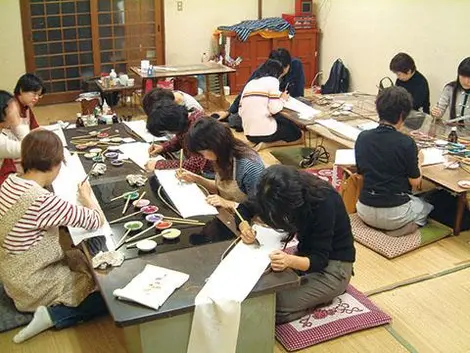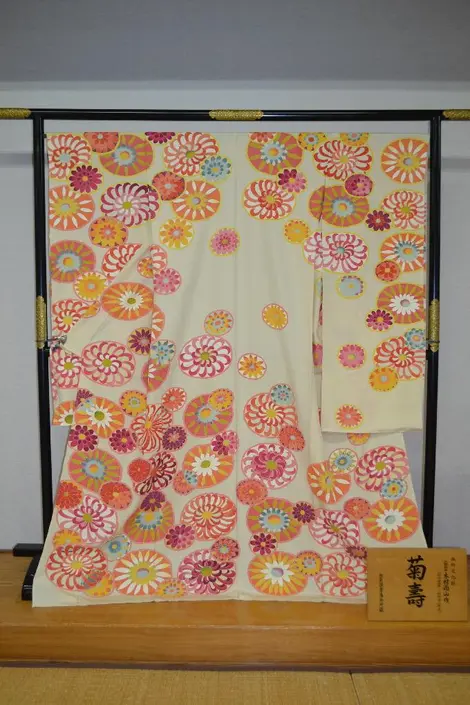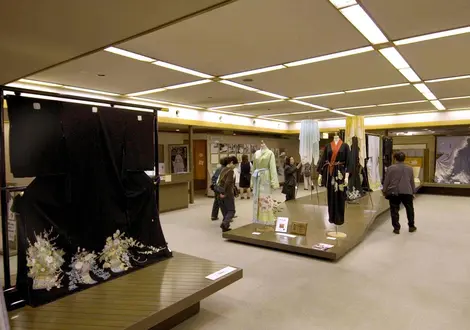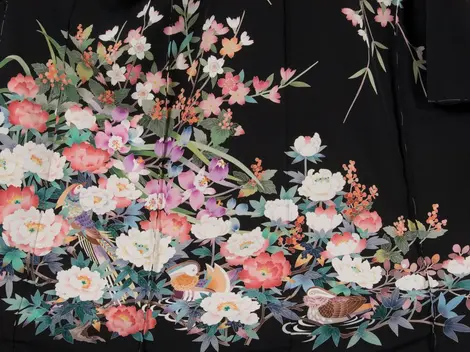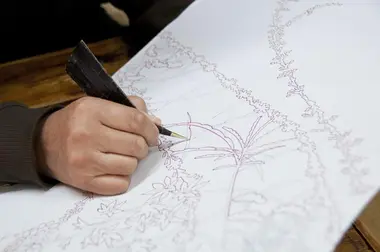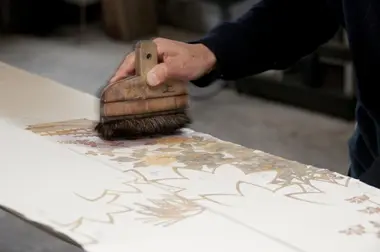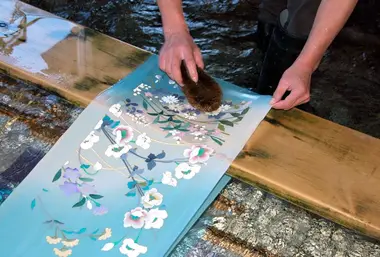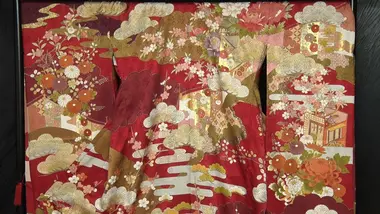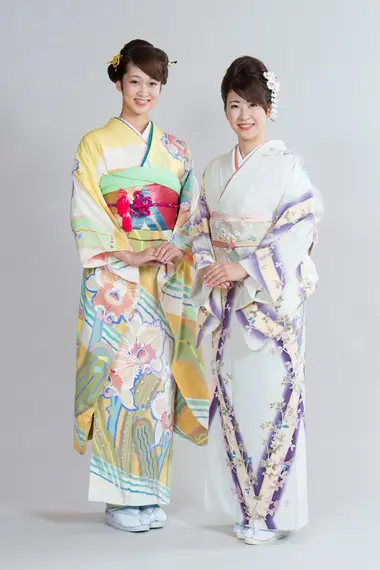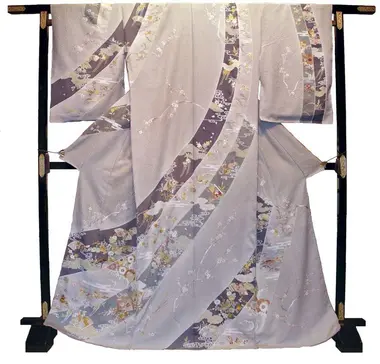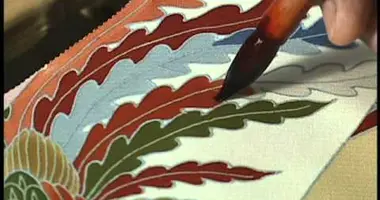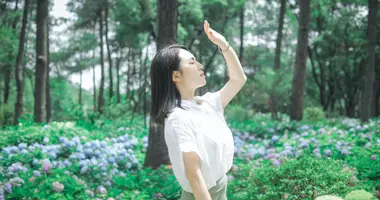Kyo Yuzen 京友禅
- Published on : 06/02/2018
- by : S.V.
- Youtube
The art of dyeing
Kyō yuzen , a technique for dyeing fabrics, developed in the early 18th century in Kyoto, has been recognized and protected as a traditional craft by the government since 1976. The craftsmen of the delicate art of yuzen demonstrate exceptional know-how; animating like magicians the precious white silks with elegant and sumptuous colored patterns.
From the fan to the kimono
The term Yuzen designates the traditional technique of dyeing silk fabrics, intended mainly for making kimonos, but also for other pieces of wafuku , traditional Japanese dressing, such as yukata , uchikake , etc. Yuzen is used to adorn fabrics with delicate and sumptuous colorful patterns of animals, plants, flowers and landscapes. This technique was perfected at the beginning of the 18th century by the Kyoto painter Miyazaki Yûzensai (1654-1736). This painter of sensu then used a technique based on rice paste developed by him to decorate his fans with several colors. From the sensu to the kimono, there was only a very small step that he took cheerfully. By applying his process to kimonos, Yûzensai had immediate success with the elites of the imperial capital.
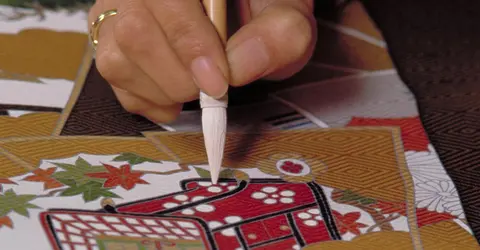
The complex technique of kyo yuzen
JNTO
A complex technique
Yuzen is a complex process including the transfer of decorative patterns, gluing, coloring, steaming and rinsing of glue. Its main characteristic is based on the itome-nori process which allows very fine detailing of the patterns and multiple colors. It consists of applying a paste made from steamed glutinous rice powder to the contours of the pattern. Acting as a protection during coloring, the starch prevents juxtaposed colors from mixing. Let's see the whole process in more detail: once the preliminary pattern has been drawn on the white fabric, its contours are delimited by the itome-nori technique . The background color is applied by brushing then the fabric is rinsed. The other colors are painted successively. Finally, the fabric is steamed and thoroughly rinsed to rid it of starch. Finally, decorations with gold or silver leaf as well as embroidery are affixed. All of these steps involve many skilled artisans to the point that yuzen has been officially recognized and protected as a traditional craft by the government since 1976.
Over time, three styles of yuzen have appeared according to the regions, cultures and specificities of the clientele.
- Kyō yuzen (京友禅)
Kyô yuzen is the technique developed by Miyazaki Yûzensai, used in the Kyoto and Uji region. This is the most luxurious and extravagant style , making extensive use of embroidery, gold and silver leaf to cater to the aristocratic clientele of the court. Its manufacture requires dozens of steps as well as the intervention of several craftsmen. The patterns are made using a gradation of colors: the darkest are in the center and the lightest towards the outside of the pattern.
- Kaga yuzen (加賀友禅)
Kaga yuzen originated in Ishikawa prefecture following the arrival of Yûzensai in Kanazawa in 1712. This style has long flourished under the patronage of the feudal lords of Kaga district. Inspired by realism , this yuzen uses plant and flower motifs . The search for realism is pushed to the extreme in the mushi kui technique in which the petals and leaves appear as if bitten by insects! The mushi kui expresses the transience of nature . The patterns are available in five tones called kaga gosai : indigo blue, crimson red, yellow ochre, dark green and violet. Kaga yuzen is also characterized by bokashi , a gradation of colors from the outside to the inside of the pattern.
- Tokyo yuzen or Edo yuzen (東京友禅 or 江戸友禅)
The aesthetic of Tokyo yuzen is decidedly simpler. It depicts the life and culture of Edo merchants in its motifs . The people of Edo wanted to have elegant kimonos that adhered to the latest fashion trends without violating the prevailing sumptuary laws. Unlike other yuzen , only one craftsman is involved here in the making process.
useful addresses
In these three regions, shops offer fittings for kimonos and yukatas made using these different techniques. For those who would like to go further, it is also possible to experiment with yuzen on small pieces (handkerchiefs, bags...).
- Marumasu-Nishimuraya in Kyoto
457 Tsuboya-cho, Ogawa-dori, Oike-sagaru, Nakagyo-ku, 604-8276 Kyoto
Phone: + 81 75 211 3273
Test the yuzen tincture: from 1,000 yen (about 8€)
- Kaga yuzen Kaikan in Kanazawa
8-8 Koshômachi, Kanazawa-shi, Ishikawa-ken 920-0932
Phone: + 81 76 224 5511
Wearing a kimono: from 2,000 yen (around €15). Test the yuzen tincture: from 1,620 yen (about 17€)
- Tokyo Yuzen Kyōbi in Tokyo
4-6-17 Shimo-Ochiai, Shinjuku-ku 161-0033
Phone: + 81 33 954 3331
Test the yuzen dye (small clothes): from 6,000 yen (about 45€)
